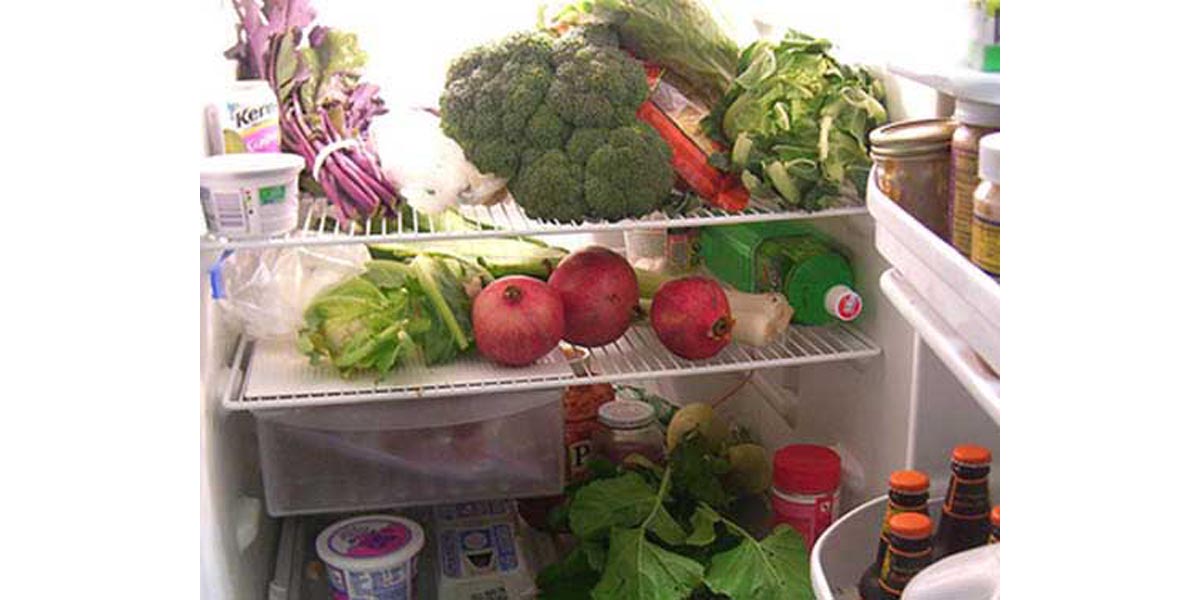Table of Contents
What I learned from my friend the nutritionist is that a healthy fridge contains more food, not less. In fact, the best thing you can do with your refrigerator is to use it as way to make sure you are never hungry, so you never binge. Here are some of the healthy items I keep in my own fridge.
A Nice Selection of Greek Yogurts
Even though Greek yogurt was not yet as wildly popular as it is now, my nutritionist friend had a great selection of Greek yogurt, especially the Oikos brand, which has not just one or two but five different live cultures.

Greek yogurt is slightly higher in protein than conventional yogurt, but the main ingredient that makes a difference in this kind of yogurt is lactoferrin. This milk protein stimulates the immune system to fight infections, and the probiotic bacteria in Greek yogurt "train" the immune system so it does not over-react to mild bacterial infections with excessive inflammation.
And the nice thing about Greek yogurt is that it is tasty. Sure, there is a small amount of fructose in the fruit jams that added to most brands, but less than the 5 to 8 grams per serving that actually make a difference in fat and sugar metabolism.
A Variety of Crunchy Vegetables
I won't pretend that a celery stick will satisfy you when what you really want is a hot pastrami sandwich or chocolate cake with whipped cream. However, keeping a variety of crispy, crunchy vegetables, already washed and cut up, ready to eat, can stave off hunger long enough to enable you to make sound nutritional decisions.
I usually stock at least carrot sticks, celery sticks, and a crunchy Latin American vegetable known as jicama. Depending on the season, I may also have a variety of bite-sized tomatoes, mushrooms, zucchini or yellow squash, radishes, and turnips. Vegetables make a snack, not a meal, but they make the difference between being able to control your appetite and not. The more different kinds of vegetables you have on hand, the more you will be able to feel satisfied by eating vegetables. Variety satiates appetite.
At Least One Homemade Soup
I also usually have a pot of soup in the fridge waiting to be reheated. Soup, as the Campbell's Soup advertisements say in the USA, is good food. But homemade soup, free of extra salt and MSG the soup makers use to cover the "canned" taste of their products, is especially satisfying.
Any slow-simmered soup made with a source of gelatin (soup bones, for example) takes added time to digest, and keeps you feeling full longer. Nutritionist and medical school professor Barbara Rolls has published no fewer than 75 studies finding that eating a slow-simmered soup at the beginning of the meal can enable feeling full on 100 to 200 fewer calories.
At Least One Ready-Made Meal
I also keep at least one ready-to-go casserole or roast with vegetables in the freezer for use as needed. Having a meal on hand saves the necessity of eating out when time is at a premium. You will spend less money, and you will eat fewer calories, plus you will have complete control over your choice of foods.
Other foods that are great to stock in your fridge?
- Kale salad. Kale doesn't get soggy like other salad vegetables.
- Fermented vegetables. Sauerkraut and kimchi have to be kept in covered containers, but they are an interesting snack.
- Bite sized protein snacks. Meat, cheese, or cured tofu can hit the spot between meals.
- Berries. A great source of antioxidants, berries can be eaten like candy between meals. Be sure to wash and dry your berries before putting them in the refrigerator, and eat in 2 days.
- Roe LS, Meengs JS, Rolls BJ. Salad and satiety. The effect of timing of salad consumption on meal energy intake. Appetite. 2012 Feb. 58(1):242-8. doi: 10.1016/j.appet.2011.10.003. Epub 2011 Oct 8.
- Spill MK, Birch LL, Roe LS, Rolls BJ. Serving large portions of vegetable soup at the start of a meal affected children's energy and vegetable intake.Appetite. 2011 Aug
- 57(1):213-9. doi: 10.1016/j.appet.2011.04.024. Epub 2011 May 8
- Photo courtesy of wudrich on Flickr: www.flickr.com/photos/wudrich/4923534988
- Photo courtesy of wild-smith on Flickr: www.flickr.com/photos/wild-smith/2013007917


Your thoughts on this